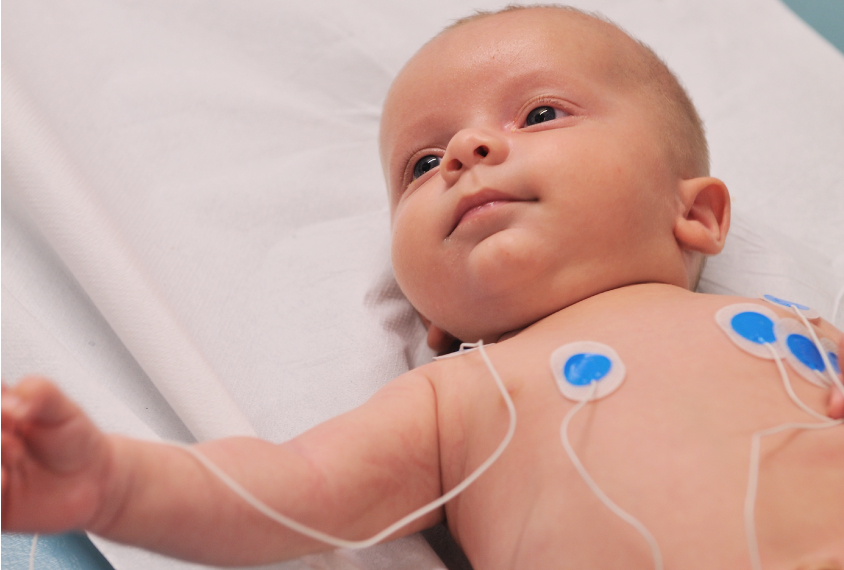
Nerves that control heart rate may contribute to autism
The part of the nervous system that regulates heart rate and breathing may be involved in autism.
The part of the nervous system that regulates heart rate and breathing is involved in autism, a new study suggests1.
Specifically, the changes in heart rate that ordinarily accompany breathing are slow to develop in autistic children.
Heart rate usually speeds up slightly as a person inhales and slows as she exhales. These fluctuations, known as respiratory sinus arrhythmia (RSA), serve as a proxy for the activity of the autonomic nervous system, which regulates heart rate and breathing, among other functions. The fluctuations are also important for regulating emotions and attending to social cues.
The new findings suggest that the autonomic nervous system is impaired in children with autism at around the same time as the condition’s core traits emerge, says lead investigator Stephen Sheinkopf, associate professor of psychiatry and human behavior at Brown University in Providence, Rhode Island. However, it is unclear whether a sluggish RSA contributes to autism traits or stems from them.
Two previous studies showed that RSA is less pronounced in autistic children than in typical children, but other studies did not replicate this finding2. The new study is the first to look at how RSA changes with age in autism.
The RSA of autistic children lags behind that of controls until about 6 years of age, when it looks the same in both groups, the researchers found.
“This study supports the need for more research into how the autonomic brain-body connection is related to autistic features,” says Jacek Kolacz, a developmental neuropsychologist at the Kinsey Institute in Bloomington, Indiana, who was not involved in the work.
On alert:
Sheinkopf and his colleagues analyzed data from a study that followed children exposed to cocaine or other drugs in the womb. They evaluated 19 children likely to have autism based on medical histories provided by the parents, and they diagnosed 12 of the children. They selected 106 controls with similar prenatal exposures and birth weight.
The team analyzed electrocardiogram recordings collected when the children were 1 month old and every 6 to 12 months thereafter, up to age 6. Each recording lasted three minutes and was taken while the child sat and played with a toy. (The researchers do not have data for every child at every time point.)
Autistic children, on average, have a diminished RSA from 18 months to 5 years of age compared with controls, the researchers found. And the amplitude of the RSA increases more slowly in autistic children from infancy to age 6 than it does in controls.
As expected, heart rate decreases with age in both groups of children, but it does so at a slower rate in the autistic children. The findings appeared in January in Biological Psychiatry.
Having a muted RSA and an elevated resting heart rate reflects a heightened state of arousal, which is an appropriate response to danger, says Amy Vaughan Van Hecke, associate professor of psychology at Marquette University in Milwaukee, Wisconsin, who was not involved in the study.
“But if that is how you are in your classroom every day, or to your therapist,” she says, “then that makes learning very difficult and makes getting along in this world very difficult.”
Brain-body connections:
RSA is controlled by the vagus nerve, which connects the brain to the major organs, supporting the idea that this nerve is involved in autism.
“It gives us a glimpse into not just how the heart is working, but actually how an important nerve is working,” says Michelle Patriquin, director of research operations at Baylor College of Medicine’s Menninger Clinic in Houston, Texas, who was not involved in the study.
The vagus nerve is one of 12 cranial nerves, which emerge from the brain rather than the spinal cord. Other cranial nerves may be altered in autism, too, Patriquin says. Some of the nerves control eye contact and facial expressions, which are often atypical in autistic people.
RSA is relatively easy and inexpensive to measure, so differences in RSA might serve as a biomarker for autism, Patriquin says.
Sheinkopf and his colleagues are exploring individual differences in RSA among children with autism to determine whether it is only altered in a subset of children.
References:
Recommended reading
Explore more from The Transmitter

Neuro’s ark: How goats can model neurodegeneration



